Wooden structures, including log homes and heritage restoration projects, are vulnerable to various forms of damage over time, with termite infestation and wood rot being two common issues that can compromise their integrity. It’s crucial to differentiate between termite damage and wood rot to effectively address and repair these problems.
Termite Damage: Sneaky Invaders of Wood
Termite damage results from the activity of termites, tiny insects that feed on cellulose present in wood. Here are some key points to consider about termite damage:
Identification:
- Look for hollowed-out wood or wood that appears to have tunnels or galleries running through it.
- Mud tubes along walls or foundations can indicate termite activity.
Characteristics:
- Termites leave behind smooth, clean-lined tunnels in the wood.
- Infested wood may sound hollow when tapped.
- Discarded wings or termite droppings (frass) near infested areas are common signs.
Prevention and Treatment:
- Regular inspections by professionals, especially for log homes or heritage structures, can help detect termite activity early.
- Use of termite-resistant wood or treated lumber in construction or restoration projects.
- Professional extermination and barrier systems can help eliminate termites and protect wooden structures.
Wood Rot: Nature’s Slow Decomposer
Wood rot, caused by fungi that thrive in moist conditions, gradually breaks down wood fibers. Here’s what you need to know about wood rot:
Identification:
- Soft or crumbly wood that easily breaks apart.
- Musty or damp odor around affected areas.
- Discolouration, often with a darkening or graying of the wood.
Characteristics:
- Wood affected by rot appears spongy and may have a stringy texture.
- Fungal growth (mold or mushrooms) on the surface of the wood.
Prevention and Treatment:
- Ensure proper ventilation and moisture control in log homes or heritage structures to prevent wood rot.
- Regularly inspect and repair damaged paint or sealants to maintain wood integrity.
- Use wood treatments and fungicides to prevent or halt rot progression.
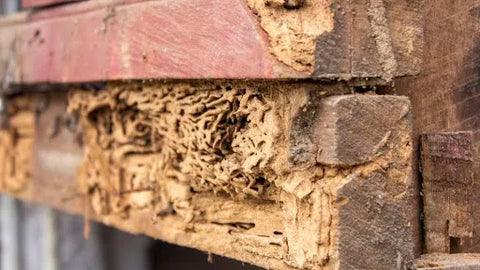
Frequently Asked Questions (FAQs) about Termite Damage and Wood Rot
Can termite damage be mistaken for wood rot?
While both termite damage and wood rot can cause structural weaknesses in wood, they have distinct characteristics. Termite damage typically involves clean-lined tunnels and signs of termite activity like discarded wings or mud tubes, whereas wood rot results in soft, crumbly wood with a musty odor and fungal growth.
How can I prevent termite infestation and wood rot in my log home or heritage restoration project?
To prevent termite infestation, use termite-resistant wood or treated lumber, conduct regular professional inspections tailored to log homes or heritage structures, and employ barrier systems. For wood rot prevention, ensure proper ventilation and moisture control, promptly repair damaged paint or sealants, and apply wood treatments and fungicides.
Can damaged wood affected by termites or rot be repaired in log homes or heritage structures?
Yes, damaged wood can often be repaired depending on the extent of the damage. Professional wood repair services like Rhino Wood Repair can assess the damage and implement suitable repair solutions tailored to log homes and heritage structures.
Conclusion: Strengthening Wood with Rhino Wood Repair
Addressing termite damage and wood rot promptly and effectively is essential for preserving the structural integrity of wooden buildings and furniture, including log homes and heritage restoration projects. Rhino Wood Repair specializes in strengthening weakened wood and repairing damage caused by termites or rot, offering tailored solutions for log homes and heritage structures. Our expert team can assess the extent of the damage and apply innovative repair techniques to restore the strength and durability of your wood structures. Contact us today to learn more about how Rhino Wood Repair can help protect and enhance your wooden investments.
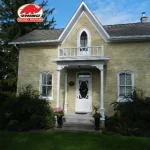 Frequently Asked Questions
Frequently Asked Questions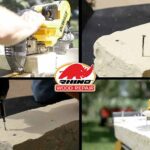 Videos
Videos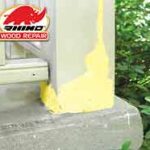 Colourful Chemist cooks up wood-repair product
Colourful Chemist cooks up wood-repair product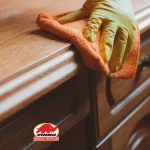 Custom Adhesive Epoxies & Formulations
Custom Adhesive Epoxies & Formulations THE SIMPLE SOLUTION TO A DIFFICULT PROBLEM.
THE SIMPLE SOLUTION TO A DIFFICULT PROBLEM.
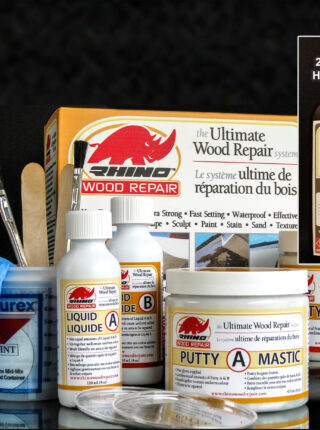
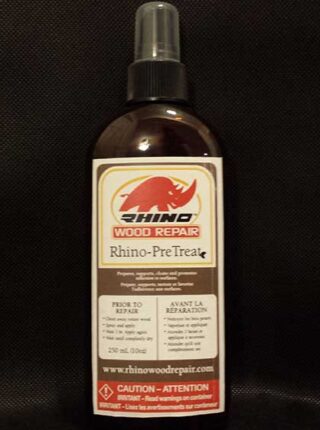
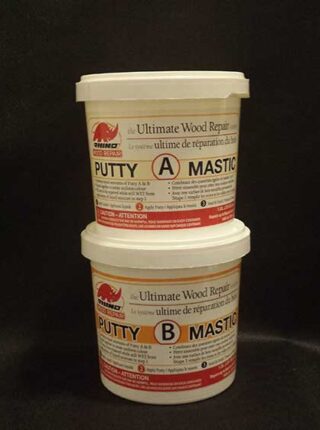
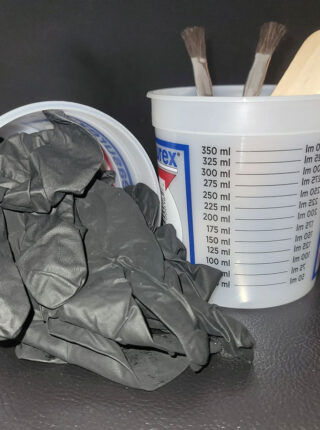
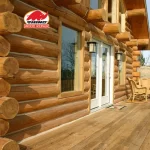 Rhino Wood Repair for Log Homes Looking to combat wood rot on your log home? Enter Rhino Wood Repair — the vanguard of wood restoration, with a legacy spanning over three decades. Led by Robin Pixner, a visionary in the field of wood preservation, our mission is simple yet profound: to breathe new life into aging wood, to fortify its strength, and to ensure that the legacy of log homes endures for generations to come.
Rhino Wood Repair for Log Homes Looking to combat wood rot on your log home? Enter Rhino Wood Repair — the vanguard of wood restoration, with a legacy spanning over three decades. Led by Robin Pixner, a visionary in the field of wood preservation, our mission is simple yet profound: to breathe new life into aging wood, to fortify its strength, and to ensure that the legacy of log homes endures for generations to come.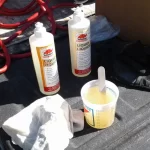 Wood Epoxy
Wood Epoxy